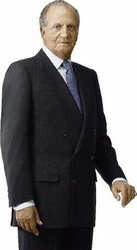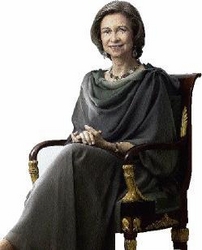THE Spanish connection
Published: Tuesday | February 17, 2009

King Juan Carlos I
Born in 1938 in Rome. Following the death of Francisco Franco, the previous head of state, Juan Carlos was proclaimed king in l975.
He immediately set out to re-establish democracy. The transition to democracy started with the Political Reform Act of 1976.
The following year, the first democratic elections since 1936 were held. The new constitution established a parliamentary monarchy.
Completed his education at the Complutense University in Madrid.
Married Princess Sofía of Greece in 1962; has three children, Infanta Elena, Infanta Cristina and Prince Felipe.
Role and power of king
The king of Spain is the parliamentary monarch of Spain. The king or queen is the head of state and supreme commander-in-chief of the Spanish Armed Forces.
The king also arbitrates and moderates the regular functioning of state institutions. The monarch's power is partly symbolic, because, in order to be valid, most royal acts must be countersigned by either the prime minister of Spain or other ministers, and in the case of appointing the prime minister, the president of the Congress of Deputies.
The monarchy played an impor-tant role in Spain's transition from Francoism to multi-party parlia-mentary demo-cracy in the 1970s; The monarchy was also crucialin suppressing the 23-F, which attempted coup d'état in 1981.
Queen Sofía

Queen Sofía, a member of one of the oldest royal houses in Europe, was born in 1938 in Athens, Greece. She spent part of her childhood in Egypt and South Africa, while the family was exiled from Greece during World War II.
In 1946, she returned to her country, where she completed her education.
Today, she is actively involved in social and welfare activities: executive president of the Queen Sofía Foundation and honorary president of the Royal Trust for Education and Help for the Handicapped and of the Foundation for Aid Against Drug Addiction.
She also takes part in various international projects for the development of women in rural communities and the expansion of small businesses.
Addressing the King
King Juan Carlos I is styled as His Majesty. The constitutional title of the monarch is simply King of Spain. A much longer title, which contains a list of over 20 kingdoms, is not in state use, nor is it used in Spanish diplomacy; but it is officially recognised in Article 57 of the Spanish Constitution.
His heir
The heir apparent to the Spanish monarchy receives the titles Prince of Asturias, Prince of Girona, Prince of Viana, Duke of Montblanc, Count of Cervera and Lord of Balaguer. Each of these titles is associated historically with those of the heirs in the various Christian kingdoms that existed on the Iberian Peninsula prior to the unification of Spain in the 16th century: Asturias for the Kingdom of Castile; Girona, Balaguer and Montblanc for the Kingdom of Aragón; and, Viana for the Kingdom of Navarre. The current heir apparent of Spain is Prince Felipe.
Royal residence
The official residence of the Spanish monarch is the Royal Palace of Madrid (Palacio Real de Madrid). However, the royal family actually resides at the Palacio de la Zarzuela, in the outskirts of Madrid.

















